Text
Hearts of Hate
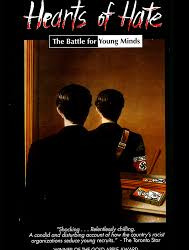
“Hearts of Hate” is a Canadian documentary covering the white supremacy movement and the battle for teen recruitment in Canada during the early to mid 1990’s. The film follows the impact these supremacist groups have on the young minds of high school students, and furthermore shows the extent these groups go to in order to convey their message of hate and marginalization among people.
When I first saw the documentary I felt disgusted, in that in a time era where racism seemed to have been abolished, these supremacists made a consistent, conscious effort to re-spark the discrimination and subdivision of people who have different ethnic backgrounds. For this to happen in Canada is something that really left me in shock. The world recognizes Canada to be a relatively diverse and socially democratic country where those of all races and sexual identities are welcome. The country itself has been given the stereotype of being “too nice” and “overly apologetic”. These stereotypes have been portrayed in a light and comedic fashion all over social media, and have received international attention. However, to have this kind of movement and conflict during a time era not too long ago draws my concern. How could this have happened in Canada, especially in our nation’s capital, where most of the protesting and recruitment happened? How did the government and other political forces standby and allow this to happen? I felt like the documentary did a great job in showing the different social perspectives on the conflict, which in general made the film very informative.
The film follows “The Heritage Front”, a Canadian neo-Nazi group that was established in 1989 by founders Wolfgang Droege, Gerry Lincoln, James Dawson and Grant Bristow. The film interviews members of the Front and follows their protests, riots and political endeavors. A large part of their Front and movement as a whole was reestablishing ethnic subdivision and superiority over every race that wasn’t white, and also recruiting and influencing teenagers to join the Front. In the documentary, the movement is seen outside of educational institutions, preaching their hateful values and beliefs at the teenagers. This particular scene in the documentary made me very frustrated. In “A Class Divided” we see the conscious efforts Jane Elliott makes in instilling the idea in her students that racism and discrimination is not something that we should uphold in our society. However, in this documentary, these groups travel to the premises of these institutions and literally undo all of Jane’s efforts by advertising hate and racism to teenagers. These groups instead, made a conscious effort to instill the idea of racism and hate into students. This scene along with the other scene of the skinheads beating the man blind sparked the most anger and emotion from me. I feel like I can speak on behalf of everyone else who saw the film when I say I hated the Front. Putting my emotions of the front aside, they did do an excellent job in providing the film with a theme.
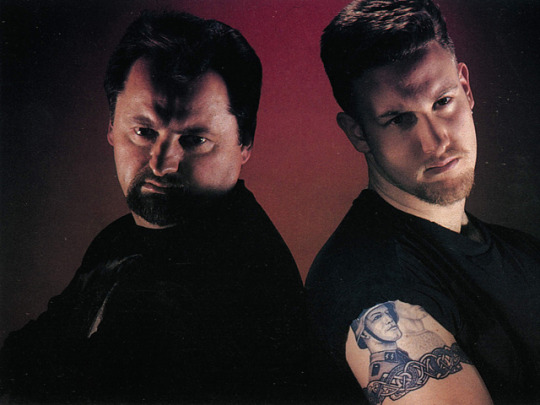
The theme of the film is very straightforward; racism. The theme of this film is clearly shown in the narration of the film, as well as the interviews and protests of the supremacists. Too me, the theme of the film isn’t really complex or sophisticated. It’s very simple, which I feel impacts the film’s quality. In my opinion, if the theme of a film is too simple and generic, the caliber of the film goes down. This documentary (although being informative and organized) showcased a theme and topic that was boring and genuinely bland. I know the topic itself is rather controversial and generates a lot of public speculation, but the way the documentary presented the information and events of the conflict was in my opinion terrible, and lacked the spark needed in order to capture the audience’s attention.

The mood and atmosphere of the documentary was definitely hostile. There isn’t much doubt about that. However, the documentary (just like all other documentaries) lacked the narrative elements and film techniques to bring out the theme and mood of the film. I don’t blame the director or the film itself, because it’s a documentary. You can’t expect an educational and informative film to provide you with the techniques and elements that belong in blockbuster movies. Nonetheless, the film definitely had a hostile mood and atmosphere to it, which I appreciated as it was appropriate to the film. The theme of racism is complimented by the hostile mood and atmosphere of the film.

Throughout the documentary I wondered how and why the Canadian government allowed the white supremacist group to protest racism and subdivision on parliament hill. I personally feel that the inaction of the Canadian government effectively empowered the Front to carry on with its movement. Had political influences and those in power done something to stop these people, I feel the outcome of the situation would’ve happened a lot faster and that many people could’ve and most likely would’ve avoided the pain and suffering they endured (like the man who lost his eye). I feel this documentary serves as a lesson to the people and to the government itself, that regardless of what the situation is or your opinion of it, you should always stand up for what’s right. You should never turn a blind eye to racism or to the hate groups enforcing it. The last time a government and organizations of power turned their eye on racism and discrimination, the outcome was a mass genocide resulting in the deaths of 800 000 people (Rwanda 1994). Speaking of Rwanda, these conflicts were occurring during the time of the genocide. So not only are they going to not intervene in a racial conflict that’s foreign to them, but also to the racial conflict that’s on their own soil. I feel like 1994 wasn’t a good year for fairness and equality.
Overall, I feel the film did a great job in bringing light to the ongoing conflict of racism. The film’s theme effectively portrayed its theme of racism through the support of the hostile mood and atmosphere that was in the film. The film also provided a very interesting insight on the supremacist’s perspective through their interviews and protests, which added an additional POV and depth to the film’s quality. As a result of the film’s qualities, I’ve decided to give the film a rating of 2/5. It’s not that the film was bad, but there wasn’t really anything special about the documentary for it to have a rating of 5/5. The plot and structure was very simple and the theme of it was simple as well. The conflict was told in a very non-sophisticated and bland manner. Furthermore, there were no narrative elements or film techniques incorporated to support the theme, mood or atmosphere of the film. I would furthermore not recommend this film to anyone, except for those interested in the area of racism and discrimination.
4 notes
·
View notes
Text
Ghosts of Rwanda
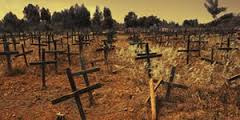
“Ghosts of Rwanda” is a documentary that was aired on the 10 year anniversary of the 100 day Rwandan genocide that took place in 1994. The documentary covers and thoroughly explains the issue, and interviews several individuals who were prominent figures before, during and after the genocide.
In 1994, the UN sent peacekeepers in Rwanda in order to establish a form of common ground and a ceasefire. These actions were driven by the hopes of preventing another failed campaign intervention, like the ones that failed in previous countries such as Somalia and Bosnia. However, upon arrival, peacekeepers were hit with the extreme wrath and power behind the Interahamwe and Rwandan Army. Unfortunately for those, some including Kofi Annan and Romeo Dallaire, their backers quickly withdrew their support from the situation, leaving not only them, but thousands of others in the midst of genocide.

Given that the film we watched was a documentary, the narrative elements used and the theme of the overall documentary I felt was very bland and linear. Then again, there aren’t many cinematic qualities in a documentary that came out 12 years ago. I found the documentary to be well structured and organized with its narrative, which I feel is very important in a documentary. Some documentaries, especially very informative ones that relate to politics and world history, can be very confusing and hard to digest. However, this documentary was very flexible and structured in a way that presented the topic to viewers in an organized and linear manner.
The documentary gave the audience an insight on the different views and perspective of those who were involved in the genocide. These interviews not only added to the multitude of different POV’s, but also added a lot of depth and quality to the topic of the genocide, which I feel is important in a documentary, considering documentaries usually gravitate towards being boring. The film starts off with Romeo Dallaire’s interview, which provided a very unique perspective on the situation. Being a General in the Canadian Army, Dallaire was sent along with 5000 UN troops to establish stability and control into the region. However, upon his deployment he realizes that what he was involved in lacked control and stability beyond his wildest dreams. Furthermore, the UN’s abandonment and neglect towards the situation impacted him severely. Dallaire, along with whatever few troops he had remaining, had very few resources and were cut off on all sides, leaving escape as a very difficult option.
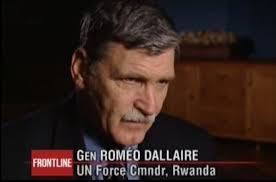
The film’s theme primarily revolved around the social, political and diplomatic failures the film explores throughout the documentary. These failures are a result from and are supported by the genocide itself, and the horrific mood it portrays. To say that the political and diplomatic aspect of the conflict failed is an understatement. I feel that Edmund Burke’s quote compliments the idea of political and diplomatic action nicely.
“The only thing necessary for the triumph of evil is for good men to do nothing.” ― Edmund Burke.
The film throughouly explores these failures as seen through the interviews with Dallaire, Kofi Annan, Madeleine Albright, and others. They clearly point out the inactivity from several powerful countries that could’ve and should’ve intervened in the conflict. Had these countries intervened, the conflict wouldn’t have expanded into the mass genocide that it was. The social aspect of the theme was also portrayed through the interviewees as well; however, it was most prominent in the narration of Laura Lane in describing events that took place during genocide as she desperately tried rescue civilians throughout her time in Rwanda. She described the inequality of the given ascribed status towards non-extremists and that society as a whole discriminated against them in the manner of a genocide. She also gave a very personal reflection on her opinions towards the actions and orders given from the UN, in that they only evacuated white people from the genocide. Laura’s interview gave the documentary a very emotional dimension to it, which I appreciated because documentaries are usually very bland and statistical. The film was accurate in expressing the mood of the film to be very miserable and horrific. It managed to achieve this through the use of close ups on the interviewee’s faces to capture the pain and emotion in them. Other than that and perhaps the dead bodies lying all over the ground (setting) there wasn’t that big of an emphasis put on narrative elements or film techniques, simply because the film was a documentary and not a blockbuster movie. I couldn’t really expect much from that area of the film.

Overall, the documentary provided a very in-depth explanation of the genocide and accurately portrayed the political, social and diplomatic themes of failures that occurred during the genocide. The film’s theme was supported and reinforced by the mood of the film, which was furthermore supported by the interviewees. I really enjoyed the incorporation of these interviews. I felt that they provided the documentary with the realism it needed as a documentary. It also added another dimension to the film which most documentaries on the conflict probably don’t have. I would rate this documentary a 3/5. It was very organized and easy to understand, and furthermore incorporated the themes and moods effectively through the interviewees (and very few narrative/film techniques and elements). I would recommend this film to only those who enjoy documentaries and those interested in better understanding the genocide in Rwanda.
0 notes
Text
A Class Divided

I feel the documentary on PBS shed a new way to approaching racism in a very unconventional manner, which to me I think is important especially when subjecting it to children. It is without doubt that children are the future to our society, and to be able to influence them in a positive way is something that shouldn’t go unrecognized. Jane Elliott did an incredible job in instilling the idea of equality and fairness among third graders through her “blue eyes vs. brown eyes” experiment.
The ideology behind her experiment was to expose the children to the atmosphere and actions of mistreatment and prejudice. Given how easy it is to influence children at a young age, the experiment effectively taught the children that being racist and prejudice was wrong, and that it has no place in society. The way the experiment worked was that Elliott would only permit the children who had blue eyes to play with the toys and playground equipment for a period of several days. Afterwards, she would then only permit children with brown eyes to play with the toys and equipment. She subjected the mistreated group of children to neglect and a sense of inferiority. This was proven to have psychological effects on children, which furthermore had an impact on their academic performance.
I feel this documentary gives the audience a different outlook on sociological issues in today’s day and age. Having being discriminated against, it brings light to the ongoing marginalization and discrimination towards ethnic minority groups in most countries around the world (especially western countries). I feel this is more predominant among African Americans and Hispanics, however there are other minority ethnic groups that can fit under this category (like Native Indians).
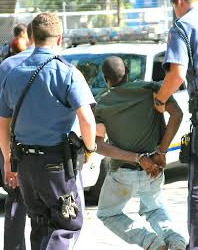
The main theme in this film is undoubtedly discrimination. Discrimination wasn’t exactly brought out or supported by the mood of the film in this particular case. In fact, as much as I tried to analyze the film, I couldn’t really find a set tone, mood or atmosphere. It was all very bland, as it should be. The film was once again a documentary that reflected the experimentation of discrimination against those living in society. Although the value and meaning of the theme and concept of the film is considered to be profound (at least in my opinion) the film is nonetheless a documentary. There can’t be a staged tone or mood to a documentary. It’s not a blockbuster movie. It’s not supposed to have an emphasis on establishing a mood or theme. If the documentary did place an emphasis on the mood or atmosphere, and to a significant extent, the film might come off as staged or fictional. Furthermore, there weren’t any significant narrative elements or film techniques used in the film, again, because of the genre of the film (documentary).
All in all, I felt this documentary shed an interesting light on the impacts of discrimination and general racism in children and in society as a whole. This documentary provided extensive material and experimentation on the psychology and social aspects behind discrimination, and furthermore utilized the idea of implementing a biased atmosphere in a classroom and among students in order to educate them on the ongoing conflict of racism in modern day, and the effects it has on people. Educating students is the first step in creating a future society that is unified and peaceful. Given then qualities of the film, I’ve decided to give this film a rating of 2/5. Although the theme of the film was very interesting and profound, there was nothing else (in my opinion) that the film had that really separated it from other documentaries and films. There weren’t any significant narrative or film elements in the documentary, or a mood for that matter either. I would only recommend this film to those interested in discrimination/racism field. Other than that, I wouldn’t really recommend it to anyone.
1 note
·
View note
Text
Shake Hands with the Devil
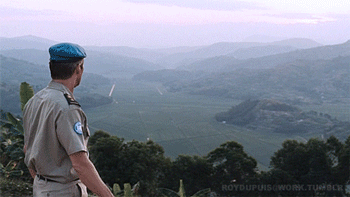
“Shake Hands with the Devil” to me, is the most graphic and horrifying movie I have ever seen. There is no film that I have seen that can even come close to or compete with this movie when it comes to the horror it shows. The movie’s horror in turn has resulted in my complete and utter resentment, regardless of how profound and meaningful the theme is, or how effective the directors use of narrative elements are. In certain scenes, the movie explicitly shows the dismemberment of hundreds of human bodies, piled up on top of each other. There were close ups of human skulls, lined up next to one another in neat rows. The movie genuinely subjects the audience to genocide like no other. It explores murder, rape and neglect as seen through the lifestyles of those who suffered during the genocide. This aspect of the film, along with theme and narrative use are the only pleasant things the film presents.
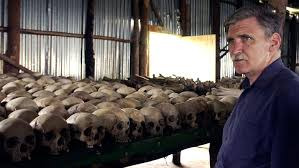
“Shake Hands with the Devil” is a movie based off of Romeo Dallaire’s autobiography, and follows the true story of Romeo Dallaire, a Canadian General that’s assigned to lead the UN troops in Rwanda during the time of the genocide. During his time in Rwanda, he’s exposed to the horrors of genocide and the neglect of the UN. Their neglect causes Romeo hardship in that he’s unable to extract the Tutsi’s or himself from that matter, from Rwanda. His experiences in Rwanda later result in extreme PTSD, which almost lead to his suicide.
It’s safe to say that the film’s theme revolves directly around the mood and atmosphere of it (the mood and atmosphere of the film being horrifying and genuinely disgusting). The mood of the film is effectively displayed throughout the use of certain narrative and film techniques. Too start off, the large piles of dead and rotting human bodies I feel does an excellent job in expressing and portraying the mood and atmosphere of the film. Furthermore, narrative elements such as real colours were effectively used during the scene where Dallaire consults his therapist. He’s sitting in a dark room. The colours in the room are black and grey, which associate with Dallaire’s emotions and also contribute to the mood of the film. I found this to be a very effective yet standard technique that most films usually incorporate. Another element that I found to be effective was the close up shot of Dallaire cutting himself with a razor on his thigh. This technique thoroughly gave the audience an insight as to Dallaire’s emotions that resulted from the genocide. It furthermore supported the horrors of genocide and contributed to the mood of horror in the film.
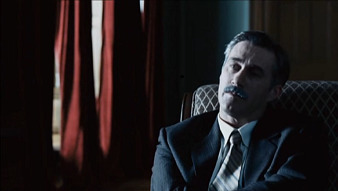
The film’s theme, I felt revolved around the idea of tragedy and pain and neglect. In this movie, tragedy and pain are made extremely obvious in the form of genocide, which displayed murder, abuse and genuine destruction. All of these were clearly evident throughout the film. I felt disgusted and horrified when I saw what the Hutu extremists were doing to the Tutsis, which is ultimately why I hate this film so much. However, aside from the obvious impacts the genocide had on the Tutsis and moderate Hutus, it was furthermore present in Dallaire. In fact, I believe that Dallaire had experienced more pain than the victims of the genocide who lost their lives. The reason I say this is because once the people were killed, their pain and suffering was over. They didn’t have to suffer from that point forward. However, Dallaire suffered from having to live through what happened, which to me, seemed more painful than actually dying from the genocide. To this day he still suffers from PTSD, so in my opinion it would’ve been a lot less painful on him to die quickly, rather than to suffer and endure pain for, presumably, the rest of his life (or until his PTSD gets under control). Neglect was also another prominent theme in the film, which related more on the behalf of the UN. The UN and member countries of power neglected the requests and demands made from Dallaire and the informants inside Rwanda. Their neglect towards Rwanda and the people ultimately created an environment for the genocide to strive in. Examples of their neglect in the film are evident when the US began to withdraw more and more troops from Rwanda, which furthermore allowed for the continuation of the genocide. Member countries of the UN only evacuated those of “foreign personnel” (otherwise known as white people) and preceded to unacknowledged the situation that was going on. The countries furthermore deliberately chose to not provide large-scale media coverage on the situation, knowing that if the public found out they’d be in hot water.
The mood of the film as portrayed through the narrative elements and film techniques directly supports and reinforce the theme of tragedy and pain and neglect in the film.

I found the film to be well composed and structured in a way that provided the cinematic and literary qualities to the audience, in that the film had a great theme and mood that suited what was going on in the film. If it was up to me (which it is) I would give the film a rating of 1/5 because of how much I hated it. However, that wouldn’t be fair. The film deserves its credit, in that regardless of how much I hated it, it was still (in my opinion and in reality) a very well structured and put together film. If I didn’t hate the film, I would’ve given it a rating of 4/5, but in order to balance my feeling towards the film, I’ve decided to give it a rating of 3/5. I would also advise people to steer clear away from this movie, especially to those who value the quality of their sleep.
1 note
·
View note
Text

When I initially watched the trailer for “Children of Men” I thought I wasn’t going to be too big on it. I hated what appeared to be the film’s apocalyptic and dystopian setting. I thought it was going to be another unrealistic “what if” type movie that, in my opinion, serves no purpose to me as an audience member seen as how none of the events in the film could possibly relate to reality or have meaningful purpose behind it. However, watching the film completely changed my perspective and overall opinion on the movie. The movie is so much more than what I thought it was and furthermore contradicts my original thoughts and ideas of it being meaningless and incapable of relating to reality, which is why I believe the movie is so incredibly magnificent. Along with showcasing action-packed adventure, Director Alfonso Cuarón decided to incorporate and explore the very unique and compelling themes of hope and faith, as well as religion, and cultural, historical and modern referencing. The multitude of different themes effectively provides an additional dimension to the film, giving it a higher quality in depth and profundity, thus giving the film an element of superiority.
In a dystopian world filled with chaos and infertility, England stands as the only country left with a functional government and established order. This causes an enormous immigrant and refugee problem for England, and thus showcases the English government in the film to be incredibly totalitarian and fascist, and genuinely against immigration. As a result, the government hunts down all illegal immigrants and sends them to refugees camps for deportation.

Nominated for three Academy Awards, “Children of Men” follows the POV of A-List actor Clive Owen as Theo Faron. After escaping a terrorist bombing and being kidnapped by a terrorist organization led by his ex-wife, he is asked to get transit papers for a client of the organization. It is later revealed that the papers are for a pregnant woman. After escaping the terrorist compound with Kee (the pregnant woman) and Miriam, the three flee to Jasper’s house and from there embark on their adventure to find and board the ship, “Tomorrow” by “The Human Project” (a group of scientists committed to ending infertility).
Hope and faith is one of the central themes of the film, in that hope depends on the future generations of mankind. In this case, Kee’s baby is the world’s hope for recovery and rehabilitation. At the sight of the baby in the refugee camp, hundreds of refugees and soldiers (on both the military and terrorist side) praise and hail the baby. The baby is an effective tool in instilling the idea of hope into the world, and has the power to stop all the chaos that has erupted throughout it (like when the soldiers stopped the gunfight in the refugee camp at when they saw the baby). Furthermore, hope has an incredible impact on the character development of Theo Faron, which furthermore supports the idea of hope and faith as a theme in the film. In the beginning, the pessimistic, dispassionate, government bureaucrat shows little to no concern regarding the events unfolding around him. He claims
“even if they discover the cure for infertility, it doesn’t matter… too late… world went to shit.”

As his character develops, he becomes more and more concerned and hopeful. Towards the end of the film, his actions display hope as seen through him breaking into a refugee camp with Kee in order to board the “Tomorrow”. I found this example to be highly paradoxical, in that his hope causes him to be in an atmosphere full of pessimism and despair. This piece suggests that perhaps there is a greater, more profound significance to it. I personally interpreted the piece as a message, in that hope will always lead you to positivity in life, you just have to find and hold on to it. If you let go, life will be filled with despair and pessimism. Had Theo, for whatever reason, lost hope at Bexhill, he would’ve failed to reach “Tomorrow” and furthermore deny humanity’s chance of curing infertility, thus causing everyone around the world to live in despair. Instead, his character fully changes from being hopeless to having hope and faith for events to come, so much so that he willingly puts himself in an environment filled with despair and misery in hopes for a better future. In the last scene of the film, there is a small flash of hope, when the “Tomorrow” appears out of the fog. This scene successfully brought out the theme of hope, in that there was hope for the future and that perhaps the scientists could help potentially find a cure to infertility. However, there is no sufficient evidence in the film to justify or prove that any of this is actually real. Maybe the ship was just a fishing boat, or maybe “The Human Project” was just a hoax in order to bring hope and faith to the people. Regardless of whether the ship can or can’t help their cause, it’s nonetheless a symbol of hope. Director Alfonso Cuarón noted that the intention of the final scene is to instill a different outlook on the outcome of events for each individual member of the audience.
“I tried to make an observation rather than to give a statement. Ideally, I want audiences to come out with their own conclusions.”
He furthermore stated in response to the cliff-hanger that, “It pretty much depends on your own sense of hope. What we wanted to do at the end was to give a little glimpse of a possibility of hope. A very small glimpse. So you invest your own sense of hope in the story. After you go through this journey of what I consider to be the state of things, outside our green zones, then at the end is the question: Do we have a possibility of hope? I personally believe yes. Hopefully, people believe that the movie is a very hopeful movie.” Those who tend to have an optimistic perspective on things and on life in general, seem to see the outcome of the cliff-hanger as successful, whereas those who have a pessimistic view on things might perceive the outcome to be negative and a complete failure. Regardless of whichever outcome you see, or whichever one occurs, the message behind the scene and its impact on the film is incredible.
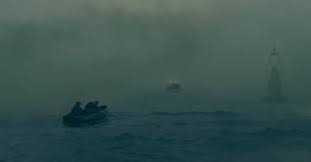
I find the beauty and intricacy of the film to lie within the theme of cultural reference. The theme is effectively instilled through the use of art in the film. Art effectively portrays not only the cultural references but in that, the themes of religion and historical references. The film then connects these themes to the theme of modern reference (reality). However, in a movie with so much going on, it is very difficult for people to notice and thoroughly analyze all the minor details of art, which is why I found the theme and its interconnections to other themes to be extremely impressive. I personally think the intricacy of the themes and the profundity beyond them is absolutely brilliant and pure genius on behalf of the director.
In order for the small details of art to be captured, very specific narrative elements were used. In most cases, art is usually displayed through shot composition, as well as through medium and long shots. In the scene where Kee reveals her pregnancy through a medium-shot, she stands in a posture that accurately resembles Botticelli’s The Birth of Venus”. The painting incorporates the idea of maternity, perhaps hinting or foreshadowing the commencement of the end of infertility.


This is just one of the many hints and clues made towards maternity in the film. Later on in the film, after Jasper finds out about the pregnancy, both he and Miriam say “Shantih Shantih Shantih”. This statement quotes and recites Author T.S Eliot’s “The Wasteland”, as well as the Upanishads. These two historical and cultural references provide a great source of hope and motivation to a world filled with chaos and misery. Furthermore, as Theo visits his cousin in the Arch of Arts, the two hold a discussion, while in the background there appears to be a pig floating in the sky, right beside what also appears to be the Battersea power station. While watching the movie I noticed the pig in the sky and thought it was relatively odd. However, the thought dwelled on me that there must’ve been some cultural reference or general significance as to why the very specific scenery of a pig was floating in the sky. After research, I realized the scenery (effectively captured by the narrative element, “focal distance and definition”) is of cultural reference to Pink Floyd’s 1977 album “Animals”.


What’s interesting about this particular cultural reference is that the album revolves around George Orwell's “Animal Farm”, an allegorical novella based off of the events prior to and after the Russian Revolution in 1917. The book primarily explores Stalinism, which is significant to the film seen as how Stalinism and its era correlates to the totalitarian government of England and accurately resembles the dystopian setting and time era of the film. This piece of cultural reference also connects to the theme of historical reference, seen as how Stalinism is an ideology that originated almost a century ago and is more or less present in the film’s futuristic time era.
In addition to the album, Michelangelo’s “David” and Pablo Picasso’s “Guernica” are also present in the Arch of Arts scene, which add further depth to the theme of cultural reference.


Lastly, during the uprising at Bexhill, a very specific narrative element was used in order to capture and bring out a certain piece. A single-shot sequence was used to reveal a mother cradling her dead son. This sequence accurately resembles Michelangelo’s “La Pieta”, the sculpture showing Mary cradling Jesus’s crucified body. This resemblance effectively showcases the misery and tragedy of the scene’s atmosphere but more importantly contributes to the overall mood and atmosphere of the film (the mood and atmosphere being grey and genuinely miserable). The sequence furthermore connects to the theme of modern reference. The sculpture and shot also resemble an image of a mother cradling her dead son in the Balkan War.



The film touched on the theme of religion in a way that connects it to several of the aforementioned themes in the film (the same way all other themes connect to one another). The incorporation of religion as a theme in the film provides additional depth and quality to it. Religion, much like artwork, is sometimes hidden in the minor details of things, almost like an Easter egg in comic books or video games. The terrorist organization known as “The Fishes” use a logo that is exactly the same as the ancient Greek word “ichthys” (meaning fish). It just so happens that Christians in the first century made an acrostic of the word, “Iesous Christos Theou Yios Soter”. The acrostic depicts Jesus Christ as a saviour. This acrostic connects to the organization in that the organization is viewed by immigrants as their saviour. As a result, this religious piece provides a unique sociological perspective on Bad vs. Good and Evil vs. Good. It successfully proposes questions to the audience that are essential in the development and enhancement of individual morality. “What is bad and what is good? Is the organization evil or well-intentioned?”
Morality is definitely a prominent issue in the film with regards to the English government and their anti-immigration stance. While some viewers believe the government is morally obligated to welcome the refugees, and others argue that welcoming the refugees will result in the deterioration of England, both sides completely miss the point. The significance of the morality in regards to the English government is in its connection between religion and the theme of modern referencing. Morality in whether or not refugees should be allowed into the country accurately references the modern day struggle Muslims, especially Syrians, have in immigrating to European countries. This was a very clever and witty way of instilling the idea of the controversial refugee crisis into the Easter-egg of a film.
Other examples of religious themes in the film include the resemblance between Kee and Theo and Joseph and Mary.


Moreover, Cuarón stated that the title of the film’s book (bearing the same name) comes from Psalm 90:3 of the Bible.
“Thou turnest man to destruction; and sayest , Return , ye children of men.”
The biggest historical reference portrayed throughout the film is without a doubt the film’s reference to the refugee camps and their resemblance to the concentration camps in Nazi Germany. When Kee and Theo arrive at the refugee camp, they have all of their personal belongs taken from them and thrown into large piles that resemble the large piles of articles belonging to the Jewish people during their entry to the concentration camps. The physical appearances of the camps are also incredibly similar, such as the gates and signs.
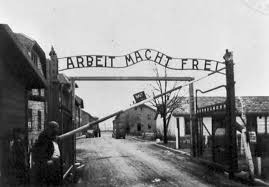

This resemblance effectively provides the audience with the powerful emotion, mood and general atmosphere of the scene in the film. The scene allows the audience to realize and comprehend the severity of events that are going on in the film.
The magnificence in the film is without a doubt the multitude of different themes, and how they’re all interconnected with one another. In order to achieve such excellence, several narrative elements were incorporated in the pieces that relates to the themes. Standard narrative examples included focal distance and definition (used for the pig in the sky), size of shot (primarily medium and close), real colours (such as grey and blue to depict the miserable, dystopian mood and atmosphere) weather (for mood and atmosphere) and the list goes on. However, there was one distinguishable narrative element that contributed to the overall success of the film’s themes. The single-shot sequence is a type of camera movement that doesn’t incorporate any cuts or different shots. It’s one, giant, long take that intensifies the action and adrenaline in scenes and adds a realistic texture to it (a perfect example being the car chase scene). However, the sequence provides the scenes with deeper significance. Throughout the film, the sequence tends to roam off of the focal point of the scene and focuses on things that appear to be irrelevant to what is actually going on. This action is what provides the film with its Easter-eggs and hidden mementos that contribute to the themes of the film and their connection with one another. An example being when the sequence focuses on the mother cradling her dead son during the uprising in the refugee camp.
The single-shot sequence, along with real colours and weather effectively portray the mood and atmosphere of the film. Although the themes and events of the film establish a general foundation of a dystopian setting, these narrative elements furthermore enhance the mood and atmosphere of the film with great effectiveness. The grey, miserable weather that seems to be constant throughout the film excellently instills the atmosphere and mood of the film to be tragic and miserable. Furthermore, real colours such as grey and blue are used to depict the refugee camp Kee and Theo are staying at. The colours of the walls and surroundings of the refugee camp are effective in portraying the miserable mood and atmosphere of the film. The single-shot sequence in one scene focuses on a sobbing mother, and as a result, depicts the aforesaid qualities of the mood and atmosphere. The narrative elements genuinely do a great job in bringing out this type of general environment, which I found really compliments the dystopian setting of the movie. The cinematographer, Emmanuel Lubezki, did an absolutely fantastic job with the elements and camera work. I feel a great deal of the film’s success is a result of Lubezki’s talent. Without his creative setting and narrative elements the film wouldn’t have been as successful in showcasing its beauty, intricacy and genuine perfection.

“Children of Men” is beyond what it appears to be on the surface. Using innovative narrative elements to explore the intricacy in the multitude of different interconnected themes, and enhance the overall mood and atmosphere of the film, which compliments its dystopian setting, “Children of Men” deserves a rating of 5/5 stars. As a result of its given qualities, along with my appreciation for the film, I’d highly recommend this movie to everyone, regardless of their preference and opinion on the film’s genre.
0 notes
Text
The Dark Knight
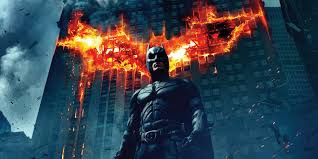
Ranking number one on Rotten Tomatoes, WatchMojo, Cinema Blend, and IMDb, “The Dark Knight” is without a doubt the greatest superhero film of all time. Following Bruce Wayne and his endeavor to end the corruption and violence undertaken by the mobs, which have undoubtedly infested Gotham as a whole, the film interestingly enough serves as more than just an action-packed crime drama. Instead, Christopher Nolan took somewhat of an unorthodox turn and subjected the film to explore modern politics, philosophy and psychology. Ultimately resulting from the multitude of different themes, the film’s overall structure and plot was genuinely enhanced, thus giving the film a unique edge and general superiority over all other superhero films.
After cracking down on the mid to low level street criminals and establishing himself within the city as an outlaw vigilante, Batman is brought to the attention of the mob bosses during one of their conferences. Shortly after having one of their banks raided by the police, news is brought to them at the conference that the police are planning to raid and cease the five banks holding the mob’s fortunes. Fortunately for them, “Lau”, the CEO of “Lau Security Investments Holdings”, had managed to extract their money from the banks and move all of their funds to one secure location in Hong Kong. Soon after explaining their money is out of Gotham’s jurisdiction and China’s inability to extradite him, Lau and the conference are interrupted by the dry laughter of Heath Ledger’s notorious, “Joker”. Following his claims of Batman’s non-existing jurisdiction and their money’s endangerment, Joker proposes to kill Batman for 50% (of their total $136M), which therefore commences the violent and corrupt feud carrying out into the film.
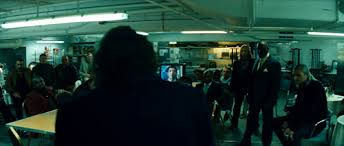
Before the movie even starts, the introduction of the entertainment companies and their logos’ (Warner Bros Inc., Legendary Motions, etc.) are tinted in a dark blue and black and are accompanied with the same colored back-drop. A gloomy, somewhat mysterious soundtrack plays over the logos. Given the genre of the film, this introduction did an incredible job in instilling the dark, fearful and dangerous mood that the film portrays, without even having the first scene shown. As the introduction fades, the first scene is revealed to be a long-shot of what appears to be a modern corporate building located somewhere in downtown Gotham. As the camera zooms in, the now medium-shot shows a gunshot shattering one of the windows from the building, and two of Joker’s accomplices zip lining to the rooftop of a bank. Right off the bat the audience is exposed to the preparation of a bank heist, but more importantly the professionalism these thugs carry with themselves. They clearly appear to be well-funded, with all the right tools and gadgets necessary in order to carry out a rather large heist, seen as through their ability to disable the silent alarm, breach the vault, etc. I found this to be incredibly significant in understanding the sheer power Joker has over law enforcement and the mobs themselves, and effectively introduces him as the frightening, dominant antagonist he is. Furthermore, I found there to be even greater significance in their mannerism, seen as how some of the thugs are instructed by Joker to murder their partner after they’ve done their part in order to reduce the amount they have to share. Much to their surprise they all end up dead, leaving all the money to Joker. This first segment allows the audience to get a feel of the magnitude behind the criminal-behavior and cognitive deception Joker portrays. Joker is a master at manipulation, and the segment effectively introduces the creative potential behind Joker’s upcoming plans. Nolan did absolutely an incredible job in introducing the antagonist, which to me is very important, especially at the beginning of the film. In this case, introducing the audience to the antagonist at the very beginning effectively set the tone and mood for the rest of the film. Furthermore, being an avid action movie fan, I personally prefer to have the film start off with an action sequence. To me, any movie starting off with a good action sequence (like a bank robbery) automatically wins my heart over a film without one. Combine the introduction of an outstanding antagonist (Heath Ledger) with a bank robbery (action sequence) and I’ve got myself a five star movie (at least for the beginning).
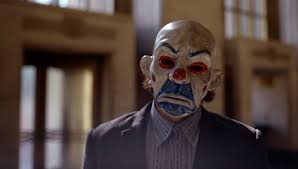
Heath Ledger’s roll in playing Joker had an incredibly strong impact on the success of the film, and played a huge part in making it the masterpiece it is today. I firmly believe that without Heath Ledger, the film wouldn’t carry the same punch it did. Heath’s acting was absolutely world-class, and the amount of creativity and detail he put behind his character really brought out the crime-induced atmosphere the film portrayed. Heath’s acting was somewhat unorthodox for a villain in a blockbuster superhero movie. The stereotypical bad guy in any superhero movie is generally someone who is very aggressive and angry, and carries a rather fiery disposition. However, Heath Ledger instead took a fairly unconventional approach to his character, which ultimately resulted in not only his stardom as an actor, but also in the stardom and success of the film. Joker’s character is portrayed to be very whimsical, which is incredibly unusual for a villain. He has a sense of humor (hence his name) and enjoys a good laugh even when amidst an environment that might hinder his laughter, like falling off of a high-rise building. Furthermore, he’s oddly polite and expresses chivalry and mannerism towards women (his chivalry towards Rachel at the fundraiser). He never uses profanity, and is generally well spoken and intelligent. Interlace his unusually well rounded characteristics with pure evil and anarchy and you now have what is called “Joker”. Heath Ledger’s acting effectively induced the theme of psychology (the mental characteristics or attitude of a person) in the film. I found Heath’s implementation of an irregular personality in Joker to be beyond brilliant. For me, it set the bar for any antagonist, in any film, 10 steps higher. I found it to be the perfect kind of madman. A madman a lot scarier than just the average testosterone fueled maniac. His unusual, gentlemen-like character made him ten times more feared (at least in my opinion). No matter how hard I try, I can’t find anything at all to negatively critique about Heath’s acting and Joker’s character.
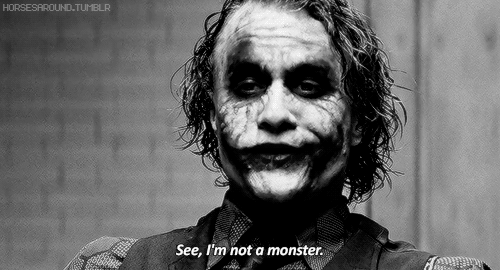
In my opinion, the most beautiful thing about Ledger’s acting was Joker’s character development and the profound values behind him. Most people who’ve seen the movie claim that Joker is a delusional psychopath, and to be fair, they’re not wrong for thinking that. To the naked eye, most people only see him for a crazy bad guy and nothing else. However, the closer I critiqued and examined his character development, the clearer it became to me that Joker wasn’t a psychopath at all. For someone to qualify as a psychopath they need to be able to feel no emotion whatsoever, according to the checklist criteria. In this case, Heath Ledger’s Joker feels emotion as seen through his anger and weird sense of humor, accompanied by his infrequent sadness when one of his diabolical plans is sabotaged. The general labeling of psychopaths aside from being emotionless are people that are cognitively underdeveloped and irrational thinkers. This is not the case with Joker. Accompanied by his intelligence, Joker abides by an incredibly interesting and rational philosophy originally adopted by Thomas Hobbes in the 1600’s. Hobbes’s philosophy generally revolved around the principle of existentialism and anarchy. The idea that governments (or in Joker’s words: the schemers) had been established in order to keep civilians in line by fear of legal punishment, and that without enforced rules humanity would return to being barbaric animals that would blow up ferries full of innocent people in order to stay alive. Joker upholds this philosophy and implements it in the film, with one of his signature quotes, “When the chips are down, these civilized people…they’ll eat each other.” I found the philosophy to be rational and incredibly compelling, which ultimately contributed to the profound theme of philosophy in the film. I was in such awe that a superhero movie could incorporate such a profound and sophisticated theme within the film. Most action movies usually incorporate the theme of something simple like vengeance. Nolan however, as per usual, decided to take things above and beyond, and incorporate something unorthodox to the genre like philosophy as the theme. Not only is it just philosophy, it is (to me) an amazingly compelling philosophy dating back to over 400 years ago, and one that implicated in the societal system and used in present day.
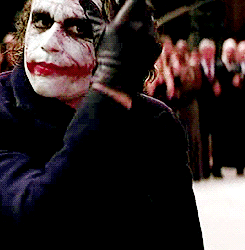
I found modern corruption to be one of the largest and greatest themes in the film. It is something that is usually implemented in some mild way, shape or form in most action movies. There’s usually a bad guy in the good guy bunch, sabotaging the good guy’s endeavors. In this particular film, modern corruption is portrayed by effectively emulating seemingly identical events that have taken place in real life, and implementing them into a superhero movie. The outcome is the horrific madness that takes place throughout the film, and therefore evidently proves to the audience that modern corruption comes with serious consequences in the film. A perfect example would be the CIA’s Extraordinary Rendition program of extraditing citizens from foreign countries and placing them in Guantanamo Bay with little to no legal representation (in order to protect the country from terrorism). This example is then emulated when Batman travels to Hong Kong to forcefully extradite Lau and bring him back to Gotham in order to have him interrogated and prosecuted. I felt this was an incredible application of real world material, and gave the movie the touch of realism it provided to the atmosphere and tone. In my personal opinion, I really appreciated the portrayal of Batman’s forceful extradition and the positive light it shed on the Extraordinary Rendition program. Many have accused the program to be unlawful and wrong, thus resulting in its categorization of being “corrupt” (even though I personally don’t believe it to be). In Batman’s own “Rendition program” Nolan portrays his actions and therefore the actions of the CIA to be in good faith and nobility, which I appreciated. The aforementioned consequences of modern corruption in the film are evident when Joker blows up the MCU and escapes with Lau. Overall, I found that the implication of this theme was essential in not only providing to the crime ridden undertone the film had, but also in providing the audience with a touch of real world material and the realistic aspect the film had (especially for a fiction film).

The elements of a narrative were outstandingly implemented throughout the film. After all, what’s a superhero movie without special effects? Christopher Nolan did an outstanding job implementing plenty of narrative elements, including camera movement, film music, sound effects, special effects, movement, physical relations, and real colors. Each of these techniques played a specific role in bringing out Nolan’s masterpiece that is “The Dark Knight”. Film music creatively and effectively used in the film brought out the feared, violent, and crime ridden environment that Gotham is. An example I preferred the most is the soundtrack played right at the beginning of the ferry scene. As the camera pans out from the passengers boarding the ferry, a very haunting soundtrack plays, allowing the audience to assume the beginning of another attack. I thought the soundtrack effectively set a very scary atmosphere during the scene, accompanied by the light flickering and sound effect of the engine stopping as the new camera shot filmed the overcrowded ferry. Sound effects and special effects are a given in any superhero movie. Without them, the movie is pretty much destined to be terrible. An amazing example of Nolan’s creative use of special effects is when he uses special effects to create an illusion in which Lau and the $68M are being burned, in order to convey the theme of Joker’s anarchical philosophy. After capturing Lau, Joker sets him on top of his incredibly large sum money. After torching the money and Lau, and killing off Chechen mob boss, Joker goes on to state, “It’s not about money…it’s about sending a message.” I believe that camera movement was also essential in inducing the action in the film. Having a stationary camera in the action sequences wouldn’t have provided the audience with the excitement and adrenaline that camera movement provides. Camera movement was superbly implemented during the car chase scene, where Harvey Dent is being transported in the armed convoy. During the attack, camera movement effectively captures the high-speed pursuit. Lastly, I felt that camera movement was fantastically implemented throughout some of the scenes in the film to really bring out the emotion of the character during the given times. An example I personally enjoyed was the landscape shot of Bruce Wayne in his penthouse. He was seated at his lounge, overlooking the city, as Alfred was serving him breakfast. The scene was a gloomy blue and grey. This perfectly set the tone for sadness in the scene, due to the death of Rachel. The colors effectively portrayed Bruce’s emotions of sadness and remorse.

Overall, “The Dark Knight” is still and will always be my favorite superhero movie. The only thing I can critique about the film in a negative manner is Nolan’s decision to leave Joker’s scars a mystery. After ambushing Gambol (the mob boss who put the $1M bounty on Joker’s head) Joker sticks the knife in Gambol’s mouth and begins to tell him the story about his scars. He claims his alcoholic father went off one night and stuck the knife in his mouth, and asked him the infamous, “Why so serious?” Later in the film, when he held the blade in Rachel’s mouth, he tells a completely different story. He said he got the scars from himself in order to provide comfort and sympathy to his wife. She got her face carved by loan sharks as a result of Joker’s gambling addiction. Finally, at the very end of the film he begins to mention to Batman how he got the scars, but the story is never revealed. I personally found this mystery to be really annoying. It bugs me so much to know how he really got the scars. What bugs me even more is why Nolan left the story of his scars a mystery in the first place.

Rating: 6/5
This film is the gold standard of superhero movies. It is ranked the number one superhero movie of all time according to almost any credible movie review source or critic you can find. The movie served as an action movie, a crime drama and a superhero movie all in one. On top of that, Nolan casted outstanding actors including Bale, Ledger, Caine and Oldman. The film carried profound themes that explored psychology, modern corruption and philosophy. In conjunction with effective narrative elements and film techniques, the film sealed the deal in being the greatest superhero movie of all time. Given the aforementioned qualities of the film, I give the film a rating of 6/5 and furthermore highly recommend this film to everyone.
1 note
·
View note
Text
Forrest Gump

I was slightly sceptical about the film at first, seen as how I thought it was going to be another depressing drama about a child suffering from a disability, and how around every corner there was going to be set-back after set-back. I felt that there was going to be no goal, or drive in the film. I thought that there was going to be nothing worth Forrest going after or attempting to achieve because of the circumstances he was in. I thought that the only thing this film could possibly be about is the boring life story of a cripple and the lessons he learned, which I feel typically results in a very bland and unexciting storyline. I often find that films portraying this sort of character tend to be very sad and depressing, which ultimately leads to my resentment. However I was too quick to judge the film in this particular case. Although the film had everything working against Forrest, he somehow managed to overcome all of these obstacles, resulting in a very unique, captivating and inspiring storyline.

“Forrest Gump” is a film following the life events of Forrest Gump (Tom Hanks). While sitting at a bus stop in Savannah, Georgia, Forrest began to narrate his life story to strangers sitting beside him. Raised by a single mother and being bullied for having braces strapped to his knees and a low IQ, it became quite evident early on that Gump suffered a lot throughout his childhood. His life seemed to have little to no meaning until he met Jenny Curran on the school bus. The two formed a well bonded relationship and soon enough Forrest had fallen in love with her. Eventually losing his leg braces while being chased by bullies, Gump soon realized he was an incredible runner. Using his newly found talent, he became a star football player for the University of Alabama, and from that point forward his life took flight. Amidst all of what Gump had gone through, he always managed to look at things from an optimistic perspective, and managed to turn everything holding him back into something that would move him forward.
This leads to the first theme of the film, which is optimism and perseverance. I found his optimism to be very motivating, seen as how if someone in Forrest’s predicament can turn things around for themselves, surely everyone else can too. Something I noticed and appreciated was how Gump’s disability was overcome. Through his perseverance and determination to flee the bullies, Gump inadvertently began running on a consistent basis, and eventually became strong enough to no longer needed his braces. Regardless of how many times they chased him, Forrest never stopped running, hence the profound and symbolical meaning behind the famous “Run Forrest! Run!” He never gave up and always remained naively positive. This is a perfect example of his optimism and perseverance.
What once held him back had now evidently moved him forward, once he realized his ability to run faster than most people. A child who was incapable of walking was now a star football player, scoring touchdown after touchdown and leading his team to a White House invitation. The boy bullied for having braces on his legs was now running wounded soldiers out of enemy lines and into safe zones during the Vietnam War, saving their lives and earning him a Medal of Honour. As the film progressed onward, his optimism and perseverance had further carved a path of success for him. His success ranged from playing on the Olympic Ping-Pong Team, to being a multimillionaire and successful business man and finally to being an internationally recognized cross country runner who indirectly invented the Smiley Face.
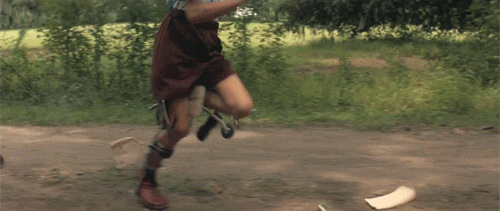
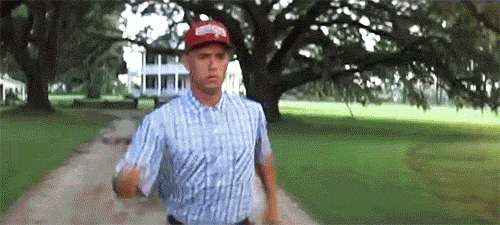
“Forrest Gump” did a lot more than just tell the life story of a man overcoming his obstacles. The film touched on several historic events and references that have had and still do have major impacts on society today. I thought that incorporating these very controversial events into the life of Gump was nothing less than genius on behalf of the Director (Robert Zemeckis). The historical references (events) that were showcased in the film include Elvis Presley, the Klu Klux Klan, the Black Panther Party, John Lennon, the Hippie Movement, the Vietnam War, the Smiley Face, Diplomacy of Ping-Pong and the Watergate Scandal. Interestingly enough, Gump managed to be involved or affiliated with all of these events at some point in time throughout the film. As an example, while Elvis Presley stayed at the Gump’s boarding house he played the Guitar for Forrest. As Forrest danced to the music, Elvis noticed Forrest’s very “unique” dance moves (his inability to move his legs due to the braces) and later on copied his exact same dance moves when he was on television. I thought this was very clever and interesting, but more importantly I felt that the implementation of these historical references and events gave the film a different dimension. I’ve never seen a film incorporate so many different and controversial events and references into its plot, let alone have the main character directly affiliated/involved in every one of them. The film then scatters these events over a large period of time causing the general atmosphere of the film (from start to finish) to revolve around these references and events. I felt as if Zemeckis took what was already a complicated dimension and made it even more complicated. However, I personally enjoyed the intricacy behind this dimension. I felt it was very unique and interesting, and that it genuinely improved the film overall.
What I found even more interesting (and entertaining) about these events was that each event, despite some of them carrying a very heavy undertone to them, was presented in a very light, innocent and comedic tone. A majority of these events largely contributed to the mood of the film, the mood being full of oblivion and naivety. In my opinion this was really brought out by the acting of Tom Hanks. A perfect example that suits this statement is the Watergate Scandal that Gump had inadvertently exposed due to him witnessing the burglary from his hotel room. A group of people with flashlights had broken into the Watergate Office Complex, and were searching a room with flashlights. Oblivious to what was actually going on, Gump calls security to report a complaint about how people with flashlights were in the building and that they were keeping him awake. He then made a request for the facility to send a maintenance man to fix the fuse box, so that those who had broken into the building had adequate lighting and wouldn’t disturb his sleep with their flashlights. Following his request, the camera pans downwards and reveals a notepad labelled “The Watergate Hotel”, therefore revealing that Gump was staying at “The Watergate Hotel”. In actuality, what Gump naively and obliviously thought was a harmless fuse box issue was actually the Watergate Scandal. The political scandal involved a break-in of the Democratic National Committee headquarters at the Watergate Office Complex, where people who were allegedly working for Nixon had infiltrated the offices and were searching any material or evidence that could help him win the upcoming election. Ironically, the following scene reveals a television broadcast showing Richard Nixon resigning from presidency.
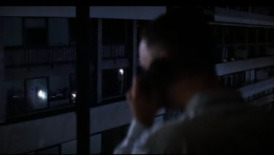
Something I felt the film managed to portray very effectively was philosophy, which leads to the other theme of Coincidence vs. Destiny in the movie. The film gave me an entirely different perspective on what life really was. At the beginning of the film Gump adopts the philosophy of how there is no destined plan in life, and that life is just full of surprises. “Just like a box of chocolates”. This philosophy is mostly supported in the beginning of the film as seen through the coincidence of Gump mindlessly running through a football game, which in turn got him a college scholarship to play football. However, as the film progresses Gump adopts the philosophy Dan Taylor has. His philosophy follows the idea that everyone has their own destiny. This philosophy is effectively supported in the middle portion of the film. Examples of the provided support include the fate behind Forrest spotting Jenny in a crowd of thousands at the anti-war parade. Furthermore, his one-night stand with Jenny resulted in the birth of their child, which then resulted in them being reunited after years of being away from each other. Lastly, the philosophy Forrest adopts at the very end of the film is a combination of both Destiny and Coincidence. This philosophy is supported by the statement Forrest made at the very end of the film.
“I don't know if we each have a destiny, or if we're all just floatin' around accidental-like on a breeze, but I, I think maybe it's both. Maybe both is happenin' at the same time.”
I personally found the meaning behind this quote to be beautiful. His philosophy is once again supported by the first and last scene of the film. At the very beginning of the film, the opening shot follows a feather floating around on a breeze. As it lands on Forrest’s shoe, the narration begins as does the film. Coincidentally, at the end of the film, just as the narration ends the same feather is stuck to the shoe of Gump. The breeze then blows the feather away, and the closing shot very much resembles the quote Gump said to summarize his narration at the end of the film. I believe that the feather perfectly represented Gump’s quote and served as an accurate symbol to his philosophy. The feather directly represents the accidental, floating-like aspect to life, while at the same time represents destiny in that if the feather never showed up in the first place, the narration would’ve never begun. This is due to the feather initiating the beginning and end of Forrest’s narration. If the narration never begun, the entire story of the film and the theme of philosophy it portrayed would’ve never existed. Regardless of which way you look at it, the meaning behind the philosophy and message it portrays is beautiful. The different philosophies Forrest adopted in the film ultimately supported the theme of Coincidence vs. Destiny. I found the theme and the evidence supporting it to be nothing less than beautiful. It has truly changed the way I will forever look at life.
I thoroughly enjoyed the acting behind Tom Hanks. Without Tom Hanks, I feel the role and character behind Forrest Gump wouldn’t have existed. Even if it did, it wouldn’t carry the same power behind it if another actor had taken up the role. I’ve always been a huge Tom Hanks fan, and so to have him play in a film I wasn’t originally too big on made a big difference on me when I watched it. The narrative element of acting, effectively carried out by Hanks, had not only enhanced the films POV of following a naive and oblivious idiot, but also added additional quality to the mood of naivety and oblivion in the film. Thinking about it, Hanks had mastered his Alabama accent to fully assimilate into the character that is Forrest Gump. His facial expressions and the look of confusion he had on his face all the time really brought out his lack of IQ. I thought the way he communicated in the film was outstanding, seen as how he did so in a very odd and distinguishable style. This odd style further contributed to not only character development, but as well as to the enhancement of the POV and the mood of the film.
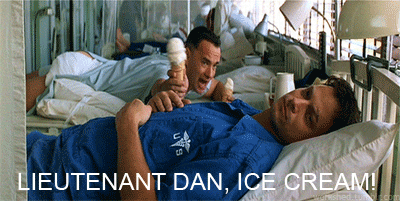
The film’s use of photography was in my opinion amazing, and I feel it went unacknowledged. However in a film with so much going, it can be very difficult to pay attention to all of the details. I felt the film did an outstanding job with the long shots and portrait captures throughout the film. There were several shots throughout the film that really captured the emotion and mindset of Forrest, ultimately assisting in providing a more detailed POV. A great example of this being when Gump decided to go on his coast to coast run and the scenery that was presented. The narrative elements of real colour and weather were successfully used in these long shots and portrait captures, which effectively presented Forrest’s emotions to the audience. Certain scenes brought out joy and happiness as a result of displaying sunlight, bright skies, and warm weather. The warm weather was accompanied by warm colours, including bright yellow, orange, red and bright blue (although blue is a cool colour, warm weather needs a bright sky). Other scenes brought out the loneliness and emptiness he felt on the same journey, resulting in the display of grey and miserable weather. The colours that accompanied the weather were cool colours, including a misty grey and gloomy blue.


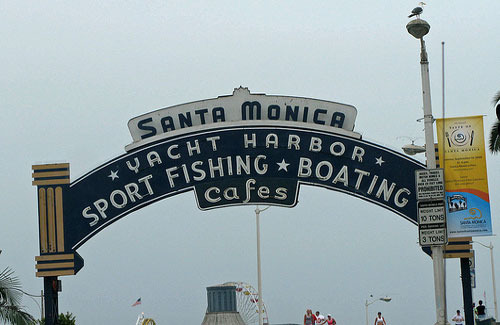
Rating: 5/5
Highly Recommend.
All in all, I was surprised with the outcome of the film. Originally I didn’t think I was going to enjoy it, however in the end I fell in love with it. Both narrative elements and historic references were successfully used in order to capture the general mood and atmosphere of the film. Additionally the use of long shots (landscape portraits) and weather and real colours were effectively used in order to better portray the emotions of Gump and provide an enhanced overall POV. Lastly, the amazing theme of optimism and perseverance and Coincidence vs. Destiny immensely contributed to the profound and beautiful meaning behind the film. As a result of the aforesaid qualities of the film, I felt that the film deserved a recommendation and rating of 5/5 stars.
0 notes
Text
Godzilla
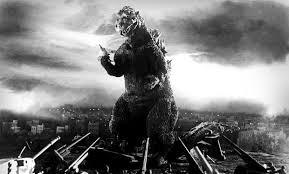
I’ve generally never been a big fan of old movies. Personally I find the very poor video quality, CGI & Special Effects, sound quality and genuine lack of technology to be annoying. I’m almost always more inclined to films that look and sound a lot more real. Unfortunately given the time period in which “Godzilla” (1954) was directed and released, it wasn’t able to satisfy my expectations the way modern films do. However, that’s not to say that I didn’t enjoy the film – I am, and always will be, a huge fan of action-adventure films. Seen as how Godzilla fell under that genre and how the film is considered to be iconic, I’d be lying to myself if I said I didn’t enjoy the film after watching it.
“Godzilla” or “Gojira” (in Japanese) begins when a series of ships are destroyed near Odo Island. As reporters arrive on scene, they soon realize a rather large “creature” has been acting up as of recently, thus resulting in the failure of the villages fishing endeavors. The Japanese then send paleontologist Kyohei Yamane to further investigate. Awakened by underwater nuclear bomb testings, the Japanese people are suddenly exposed to the dinosaur that is Godzilla, and the terror he reigns over them. Following the massive attacks, it’s up to Yamane’s daughter, Emiko, as well as Hideto Ogata and Dr. Serizawa to bring an end to the monsters madness.

One thing I really appreciated that the film brought was its message and theme behind World War Two. The theme behind a nuclear holocaust and the metaphor directly affiliated with Godzilla is something I wasn’t really expecting. I didn’t look that deep into the film to recognize the message Honda was trying to portray, especially considering the film was released shortly after the Second World War. However, the more I analyzed the film, the more I began to realize that in the film the attacks carried out by Godzilla resembled the attacks and impact the atomic bombs had on Nagasaki and Hiroshima. As explained by the film’s producer Tomoyuki Tanaka,
“The theme of the film, from the beginning, was the terror of the bomb. Mankind had created the bomb, and now nature was going to take revenge on mankind."
Director Ishiro Honda further elaborated,
"If Godzilla had been a dinosaur or some other animal, he would have been killed by just one cannonball. But if he were equal to an atomic bomb, we wouldn't know what to do. So, I took the characteristics of an atomic bomb and applied them to Godzilla."

I also recognized one particular scene where after Godzilla attacks, all that’s left to see is the city engulfed in flames, bodies lying everywhere, and a general setting and mood of a dystopian and apocalyptic environment. This was portrayed through a series of different film techniques, however, it was predominately composed of the three different shots from Size of Shot (being the long shots, medium shots, and close ups).In my opinion, and in actuality of what the director was trying to portray, the environment very much resembled the aftermath that took place after the bombing of Hiroshima and Nagasaki.

The photo above shows a long shot of the city, effectively establishing the setting and mood to be a dark, apocalyptic environment.
Being a black and white film, Honda had to compensate for the lack of real colors, and so he focused most of his general attention and emphasis on natural light. I felt his emphasis on natural light did in fact make up for real colors. Given the theme and nature of the film, it was only right that the natural light of the film conveyed a very miserable, grey and dark environment throughout the movie. Without this portrayal, I believe the films theme would collapse on itself – unless otherwise those living in Japan after the atomic bombings were in a relatively peaceful, bright environment (which I doubt). As a result, seen as how the film effectively conveyed the mood of the film through natural light (darkness) it’s fair to say that natural light effectively played the role of real colors. Aside from the film music and sound effects, the weather was very distinctive as an element. I felt that it added a lot of depth and quality behind the film’s setting and mood. At the beginning of the film, a large Japanese freighter encounters a storm. Given the grey sky and large amounts of wind and rain, the storm played a role in the foreshadowing of events to come, as well as establishing the mood of the film (seen as how storms are generally portrayed to be rough, cold and miserable). In events to come, this prediction holds true as seen through the attacks on the city, leaving the environment and the lives of those living in it, to be accurate representations of the storm; rough, cold and miserable. In addition, the sound effects and film music really brought out the element of fear and adrenaline throughout the film when Godzilla attacks, which I thought was amazing considering back then they didn’t really have as much access to that kind of technology. The fact that they managed to incorporate those elements is really impressive. Ultimately, I felt Honda did an excellent job with the use of narrative elements and film techniques. They effectively brought out the very apocalyptic mood the film’s plot was supposed to (and did in fact) have.

The only negative remark I have towards the film, aside from my predisposition to generally not liking old films, was the acting in this film. There’s literally no film I can compare to this one to bring out how bad some of the acting was. In certain scenes of certain films (even blockbuster films) there are some scenes where the actors could’ve cleaned up their act a little bit. I understand that. No film is precisely perfect, and regardless, every critic will have something to say about the film. However—and this being a big “however”, I’ve never seen such unrealistic acting in any given old or modern film. I understand that old films are more inclined to have poorer acting, and I don’t mean to judge or compare the two very different eras, but acting at this magnitude is just something extremely rare in modern, and even old film. The actors genuinely made me feel as an audience member that they were trying too hard to act, and as a result revealed the unnaturalness in their acting. In particular, during the close ups of the Emiko’s actress reacting to Godzilla and his attacks, it was so obvious that the actors weren’t really scared. Of course they yelled and screamed, but it was so obvious that what they were doing wasn’t really sincere.
Other than that I was actually surprised on how the film turned out. Unfortunately it didn’t have the audio and visual quality I’m used to, but then again there’s nothing you can really expect considering the film came out more than 60 years ago. To be fair, in that time period the film was considered state of the art in terms of its advances in technology (like Special Effects) and audio and visual quality. Overall, Honda’s use of narrative & film techniques to bring out the theme and mood of the film was very creative and effective. The plot and story of the film made it very entertaining, and to my disbelief, I really enjoyed the film.
Rating: 4/5
I felt the dark, miserable and apocalyptic mood and setting of the film was effectively displayed through Natural Light, Size of Shot and Weather. I found the creative theme and idea behind the film, which was connected to real world history, to be impressive and very compelling. In general, the director did an outstanding job with the film, thus resulting in my rating of a 4/5. Originally I planned to give the movie a 3/5 because of the terrible acting and poor audio and visual components. However, because of the films aforementioned qualities and the iconic reputation behind it, I felt it deserved a 4/5 rating. I wouldn’t recommend this film to anyone who doesn’t like old movies. However, I would recommend it to those who don’t mind them, and those interested in the action-adventure genre.

1 note
·
View note
Text
V for Vendetta
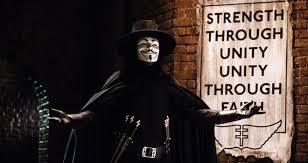
V for Vendetta follows a masked man who seeks revenge on his government for their deviance and violent acts towards their own people. Accompanied by Evey, the two plot an attack on their governments Parliament, an attack in which their government tries everything they can to spoil and keep their secret of deviance and violence from their people.

V for Vendetta was in my opinion a very well rounded film in terms of the controversy that took place throughout the film. The film clearly displayed the horrific effects terrorism had on the general public and the pain of those that were, or were of relation to, the victims of terrorism. Alongside that, the film displayed more than just common terrorism. The film was able to give the audience a different perspective on terrorism. Unlike most films that follow the “good guy”, this film followed the “terrorist” and gave us a look on things from the completely opposite end of the spectrum.
The characters clearly displayed their aspirations in wanting to abolish their current government. V claimed that the government had come up with several diseases and epidemics in order to kill of their own people, and profit off of the vaccine only they had, which was later proven to be true. This reveal sparks a different interest in the audience towards the characters in the film, and introduces the movies theme of democide. The term “democide” refers to "the murder of any person or people by their government, including genocide, politicide and mass murder". This theme is clearly and effectively displayed in the plot of the film, as seen through the St. Mary virus that was deliberately placed at Three Waters. As a result of democide, the government was now the antagonist and the terrorist was now the protagonist, which is clever seeing as a terrorist being a protagonist is an oxymoron.
Towards the end of the film the characters executed their plot to restore order and justice in London by blowing up Parliament. Their actions were effectively portrayed through camera movement and film music. The camera movement shown during V’s hand-to-hand combat scene thoroughly brought out the adrenaline in the scene. The film music portrayed during the same fight was very effective in setting the mood for the scene. The dark and violent mood of the scene also reflects the mood of the overall dystopian film. The dark, violent and dystopian mood furthermore supports the theme of democide in the film.
Once V passes away, the director chooses to leave his identity unknown to the audience. I felt like this was a very clever way to close off the film. The persona behind V was the concept to speak and represent the people on their own behalf, even when the people were too scared to stand up and oppose their own government. The idea of leaving V’s identity unknown can instil the idea that V wasn’t just one individual person, but the thousands of people he represented. To give him an identity would be to give everyone in London who was too scared to stand up to their government the same identity. I think this was the director’s way of sending a message to the audience, in that V was a man for the people.
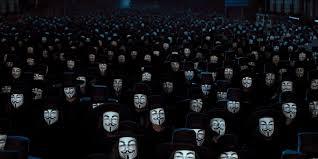
I also really enjoyed the overall plot of the film and how closely it relates to common political struggles certain countries might be or might have been facing throughout time. The idea of how a government intentionally kills its own people through an epidemic to profit from vaccines that only they had, somewhat represents the actions of Nazi Germany in 1939. They deliberately disguised Nazi troops as Polish Military Personnel, and then had them “attack” Germany. As a result of the massive loss of life, Nazi Germany then gave themselves the authority to invade Poland. Although this doesn’t directly correlate to financial profit and an epidemic, they do follow the same general guidelines and principles of democide. All in all, I really enjoyed the film’s plot and the meaning portrayed behind it, as well seeing how the film’s events very similarly resembled events of the past (WWII). I enjoyed the compelling theme of the film, and found the mood to compliment the theme nicely. I also found the narrative elements and techniques to greatly enhance and bring out the theme and dystopian mood film. Given these qualities and attributes of the film, I decided to give it a rating of 4/5. Furthermore, I would recommend anyone interested in action/sci-fi thrillers to watch it.
Rating: 4/5
1 note
·
View note
Text
Hotel Rwanda

“Hotel Rwanda” takes place in Rwanda during the genocide of the Tutsi people in 1994. The film follows Paul Rusesbagina, a Hutu hotel manager at the “Hotel Des Milles Collines” in Rwanda, while accompanied by his Tutsi wife Tatiana and three children. As Paul drives home from work one day, he horrifically witnesses the mass murder of the Tutsi people. Eventually being captured, Paul manages to spare the lives of his family and neighbours by taking the Hutu soldiers (the ones holding them captive) to the Hotel, where he bribes them with money and jewellery. Unable to flee from the country, Paul and his family must reside in the hotel, along with 1200 other refugees. Paul must deflect the Hutu soldiers, care for and attend to the needs of those residing in the hotel, bring strength to those around him, and maintain the hotel’s appearance of being a fully functional, high-end hotel.

Terry George did an outstanding job in portraying the ordeal of Paul Rusesbagina in “Hotel Rwanda”. I feel much credit is owed to Don Cheadle for his superb acting and performance throughout the movie. I’ve never personally been a big Cheadle fan, but of all of his films I’d say this and “Traitor” (2008) were without a doubt my favourites. His display of affection towards his family is remarkable, especially when he finds his nieces at the refugee camp towards the end of the film. Although the film moderately censors some of the extreme violence and horror that took place throughout the genocide, Terry George did an outstanding job in the portrayal of the genocide and accurately incorporated both the foreign and domestic events that took place. From an entertainment perspective, and in my own opinion, I enjoyed the point of view George portrayed in this film as opposed to Spottiswoode’s point of view from “Shake Hands with the Devil”. His point of view follows Dallaire and the excessively graphic events he witnessed. I love how George managed to portray Paul’s point of view and the events of the actual genocide that took place, with exact accuracy. However, at the same time he managed to moderate some of the atrociousness from the scenes. I also really enjoyed how George steered a bit away from the political side of things and kept the film relatively simple by focusing more on the adventure of Paul’s predicament. This really made the film more interesting and gave it a more blockbuster, action-packed film texture to it rather than just having it serve as somewhat of a documentary.

Given the event the film was portraying, it was only appropriate that the mood and atmosphere of the film was filled with violence, fear, sadness and overall horror. Aside from the film automatically having those qualities established in the mood just from the nature of the genocide surrounding the plot, George managed to effectively instil the mood through Tatiana Rusesbagina. Sophie Okonedo did an outstanding job in carrying out her character. I’ve rarely ever seen a supporting actor carry out such an outstanding job and express so much passion in any given scene. As Paul leaves her and the children on the UN convoy to stay back with the refugees, her emotion was so raw and uncut that it made me as a viewer feel the sadness and misery behind her act. Her acting in the scene directly and effectively instilled the mood of sadness into the film, accompanied by the aforementioned qualities of the plot and the genocide itself. When the UN convoy got ambushed and the militia personnel held a machete to her neck, the amount of energy she provided in her fear was absolutely unreal. The way she jumped over her children to protect them and shook uncontrollably furthermore brought out the mood of fear and horror in the film. Lastly, there was one particular scene of her acting that caught my attention because of the oxymoron it portrayed. On the way back to the hotel from the convoy, Tatiana was incredibly emotional because of Paul’s abandonment and her near-death experience. Sophie’s act was a combination of anger, happiness and sadness, all at the same time. I personally spent ten minutes trying to contemplate how so many different, contrasting emotions could fit so perfectly into one act. Tatiana showed so much love, hate and resentment towards Paul, all at the same time. This scene not only contributed to the mood of the film, but also gave the audience an insight as to how life was like for those living in Rwanda during the genocide. Being hunted, as well as being neglected politically on the international scale, most Tutsis and moderate Hutus felt the emotions that Sophie portrayed in her character. Overall I felt that Okonedo’s acting excellently promoted the fearful and horrific mood/atmosphere the movie had. I thought her acting was magnificent and I firmly believe that she was the best actress out of all the actors/actresses in the film.

I found the theme of the film to generally revolve around the idea of tragedy. The film predominantly exposes the audience to the hellish lifestyle Paul and his family have during the Rwandan genocide. It accurately emulates the real life genocide that took place, and the impact it had on the lives Tutsis and moderate Hutus. The film clearly shows the tragedy in Paul and his family’s life. They were forced out of their home, and lost all of their belongings during the start of the genocide, including their jewellery, cars and other items of great financial and sentimental value. They had lost a lot of their money and tools as well. Aside from the tragedy in the materialistic loss that they took, Paul and his family also suffered from emotional pain. They’re neighbours, friends and distant family were slaughtered, leaving only them to suffer the mourn. The genocide had caused Paul’s nieces to go missing, an event that caused him and his family incredible sadness and grief. George effectively instilled this theme by implementing narrative elements such as close-ups, acting, film music and real colors. An example of the narrative elements implemented is when Paul and Gregoire stumble upon a road filled with dead bodies. A close-up shot of Paul’s face is taken in order to capture the emotion of shock and terror Paul was feeling. The atmosphere in the scene was foggy and dark, and was accompanied by a mourn-like soundtrack that really brought out the vibe of death in the scene. The colours in the scene were a dark blue-grey and black. These colours perfectly provided the general mood and atmosphere of the scene with horror and sadness. The narrative techniques George implemented genuinely assisted in proving the general mood of the film to be sad, fearful and horrific which also happens to inadvertently support the theme of tragedy in the film.
Rating: 5/5
Overall, I really enjoy action-adventure films and this film brought me the thrill and the rush that I get from watching films in the action-adventure genre. Terry George’s touch on getting into Paul’s life and predicament, complemented by Cheadle’s acting in my opinion made the film a lot more interesting and captivating. I really appreciated the censorship George incorporated, as well as the absolutely incredible acting of Sophie Okonedo. I feel that without her, the film wouldn’t have achieved the additional dimension of mood/atmosphere that it had. The narrative elements that were used effectively portrayed the theme of tragedy in the film. Given the extensive aforementioned qualities the film had, in conjunction with my predisposition to liking action-adventure films, I believe the film deserves a rating of 5/5. “Hotel Rwanda” was an outstanding film and I’d recommend anyone interested in the Rwandan genocide or the action-adventure genre to watch it.
0 notes
Photo

The Bourne Identity
As part of a CIA experiment, David Webb was brainwashed and unknowingly trained to be used as a government assassin, whose physical and cognitive abilities surpassed that of a normal human being. Now known as Jason Bourne, the spy is found washed up off the coast of Marseilles where he is confused and angry as to who had put him into his current predicament. Searching for answers, Bourne takes it upon himself to seek those responsible for what they did to him.

The Bourne Identity did an incredible job in portraying Jason Bourne as a super spy. Most credit should be given to Matt Damon, whose entire persona perfectly suited the character and made the films POV of Bourne a lot better. I really enjoyed how the director emphasized Bourne’s superhuman instincts and abilities, which got him out of every sticky situation he encountered. From combat, to evading his enemies, to taking a Mini Cooper to a high speed pursuit. Not only did Damon effectively carry out his role, but the director did an incredible job with supplementing the film with outstanding supporting actors. Franka Potente did an incredible job throughout the majority of the film. However, there were some scenes throughout the film where her acting was a little bit too corny and over the top. Particularly when she had found out about her picture being published on the police watch list. Her reaction was a little bit cheesy and corny. It made it seem obvious that she was acting. Other than that, she did a relatively good job, and was an overall great supplementary actor to the film.

Doug Liman really brought the movie to life through his very effective use of camera movement. Throughout the several action packed scenes in the film, almost all of them were shot with a large emphasis on camera movement to bring out and expand the action in the film. I felt the camera movement was a key factor in giving the audience the hype and adrenaline rush they were looking for. Most camera movement follows Bourne’s encounters with his opponent’s one on one, particularly following his hands in hand-to-hand combat. This is clearly evident in his encounters with the soldiers and guards at the US embassy in Switzerland, as well as his encounters with multiple CIA assassins sent out by Agency to get him, including “The Professor” (Clive Owen), and “Castel” (Nicky Naude). Camera movement was further incorporated in scenes where Bourne was on the run from local authorities. A relatively large scene in the film that incorporated this technique was the notorious Mini Cooper pursuit. I was particularly fond of that scene, not just because of the use of Camera Movement, but the adrenaline and thrill it gave me when I first watched the movie. Camera Movement nicely complimented the action-packed scenes of the film. These scenes directly supported and contributed to the thrilling and suspenseful mood of the movie.

The film also did an incredible job with the sounds and music of the film. The music at the very start of the film did an excellent job at setting the theme of mysterious espionage. It had somewhat of a symphonic, gloomy ring to it, which I really enjoyed since I get a shiver every time I listen to it. The film also carried a very distinguishable soundtrack that would prematurely notify the audience every time danger was lurking. The soundtrack Liman incorporated into the film really added to the depth of the action to the film, and really drew out the adrenaline in the film. I personally feel the Jason Bourne series does film music and sound like no other.
youtube
The general plot the film portrayed to me was the most appealing aspect of the film. Being a huge fan of action-adventure films, I genuinely felt the plot The Bourne Identity has is superior to most action-adventure film in the genre, at least in my own opinion. The idea of playing cat and mouse between the Agency and Jason Bourne really stuck to me, and it’s because of the plot that initially drew my attention to the film the first time I watched it. To this day I still enjoy watching the Bourne series. Something the film, and the series as a whole touched on that not too many people picked up on is the films emphasis on acts of treason towards a country. This effectively established treason as the main theme in the film. In the US, several individuals were on the hunt from the US government as a result of whistle-blowing, or in other words, committing treason. Edward Snowden is a perfect example of this, seen as how the film directly resembles Edward’s actions. Opposing his country’s actions and ideas, he revealed classified government information to the public, as well as to other countries. As a result of his actions, Edward Snowden fled from Hawaii to China, and then from China to Russia, where he was granted asylum. In Bourne’s case, he rebelled against his governments orders and deliberately targeted those in government responsible for brainwashing him (even though he volunteered to be brainwashed). His actions and defiant behaviour accurately demonstrated treason, which effectively supported the theme of treason in the film.
Overall, I really enjoyed the film and its use of narrative elements and film techniques to effectively convey the mood of the film. I felt Franka’s acting could’ve been a bit better, but then again no film is precisely perfect. I found the plot to be thrilling, and felt that the theme and mood of the film complimented each other nicely. I genuinely enjoyed how the film provided its viewers with the action-packed adrenaline rush most action movie enthusiasts look for. Lastly, I found its reflection of events that have taken place in reality to be very creative and compelling. Given the aforesaid qualities of the film, I’ve decided to give the movie a rating of 4/5. Although many argue that the film deserves a 3/5, because it’s one of my favourite action movies, I felt I should give it a 4/5. In addition to the rating, I’d highly recommend anyone interested in action-thrillers to watch the movie.
1 note
·
View note